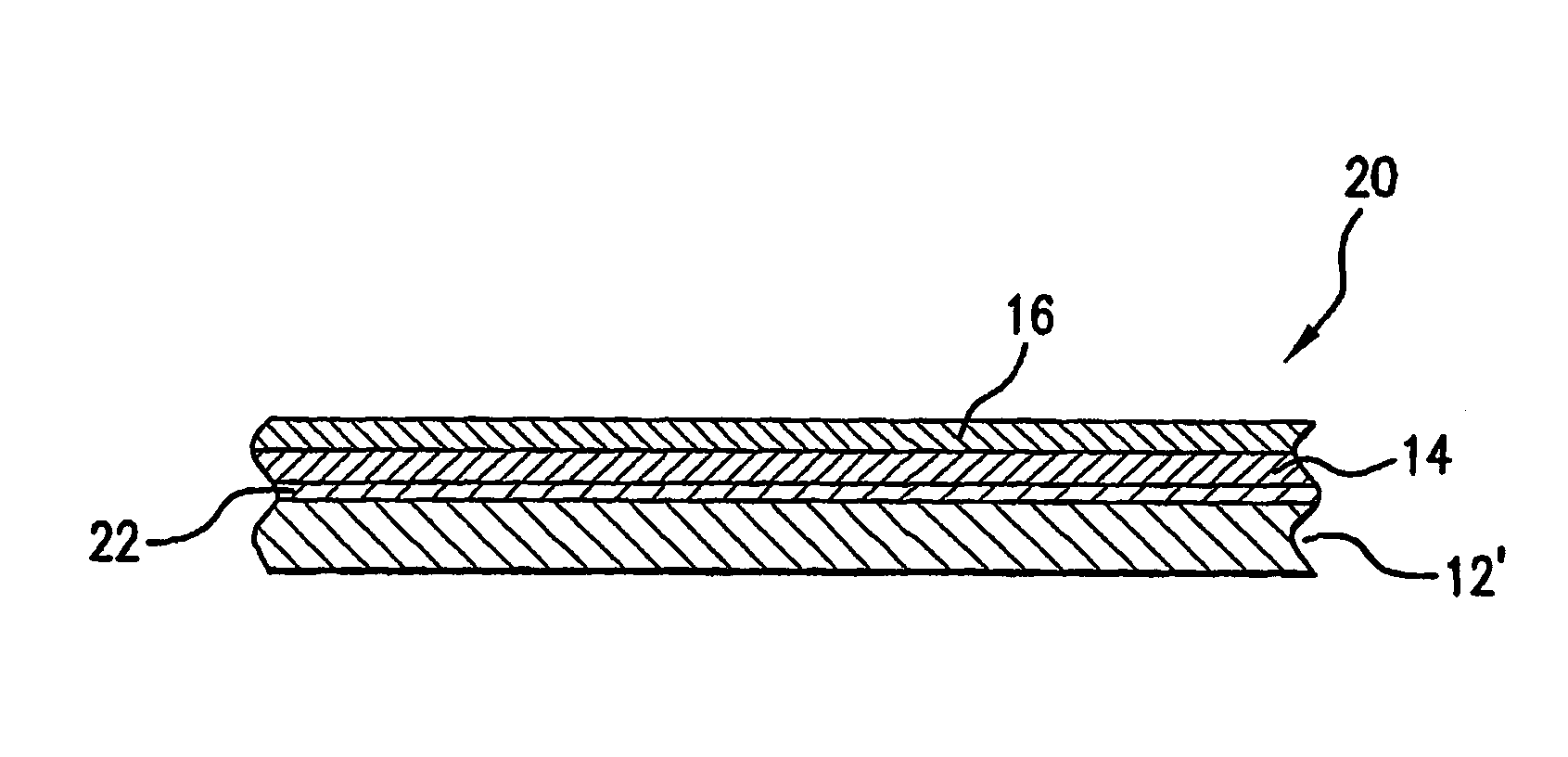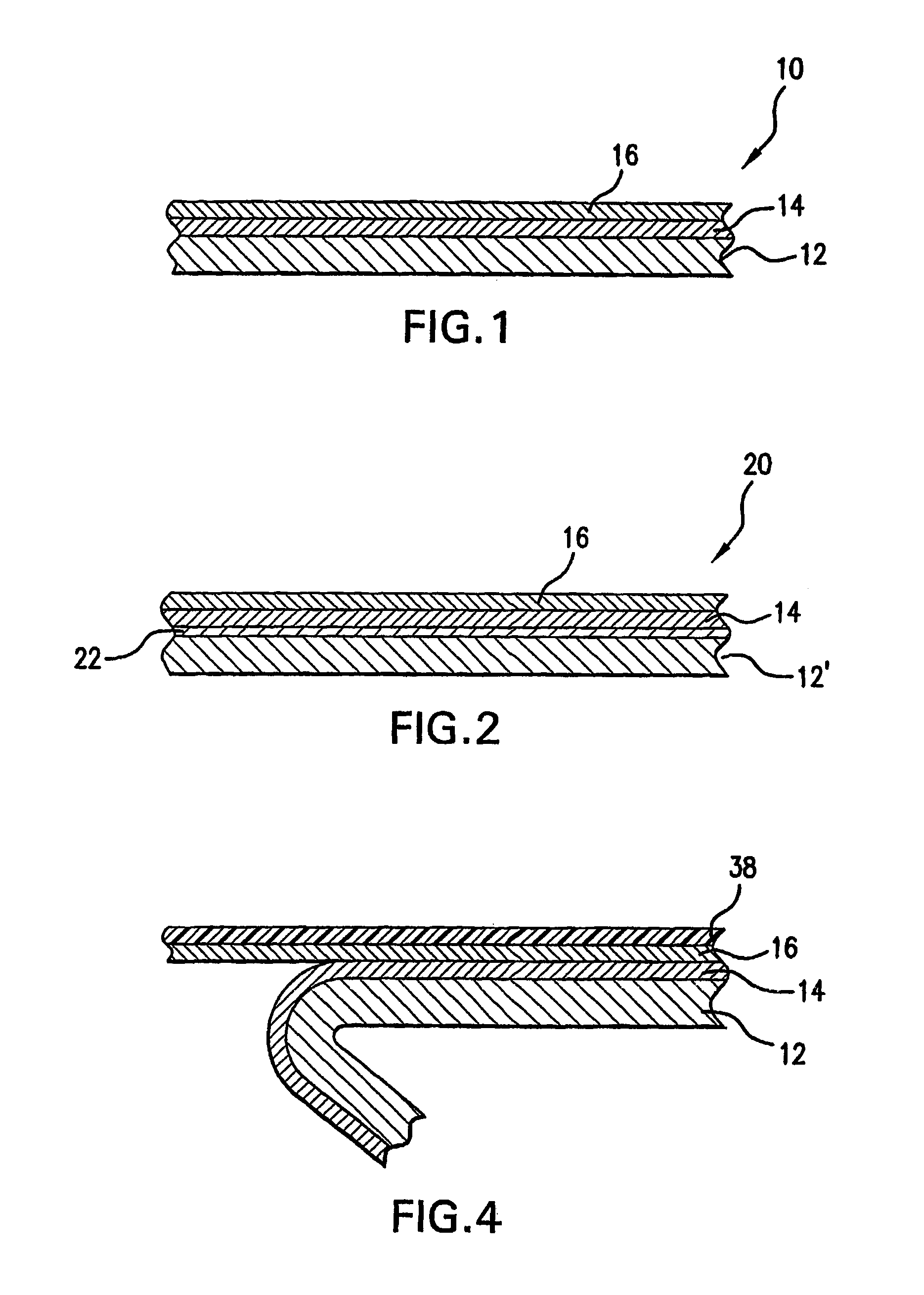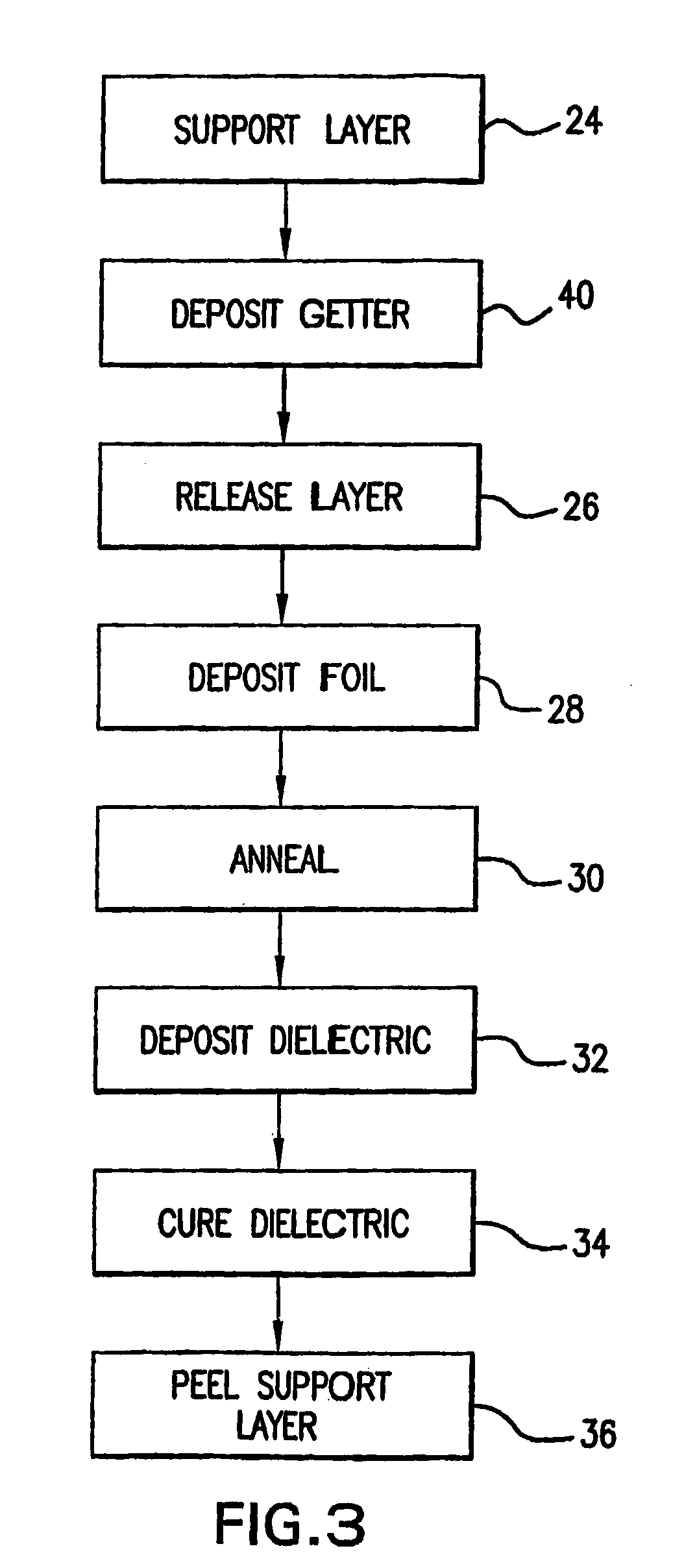Support layer for thin copper foil
a support layer and copper foil technology, applied in the field of copper foil, can solve the problems of blisters on the surface of copper foil layer, and regions of laminate that are unacceptable for fine-line circuit processing
- Summary
- Abstract
- Description
- Claims
- Application Information
AI Technical Summary
Benefits of technology
Problems solved by technology
Method used
Image
Examples
example
[0029]Support layers having the compositions and thicknesses recited in Table 1 were coated with a release layer having a thickness of between about 12 Å and about 200 Å and a nominal composition that was a mixture of chromium oxides, chromium, and chromium hydroxides. The release layer was deposited by electrodeposition. A copper foil layer having a nominal thickness of 5 μm was deposited by electrodeposition. The so-formed composite was then heated to 170° C. in an air, nitrogen or forming gas atmosphere for the time recited in Table 1.
[0030]The annealed samples were then heated to 360° C. for 30 minutes in a nitrogen atmosphere to simulate a cure cycle for a dielectric. The occurrence and density of blisters was then rated qualitatively to anticipate the quality of imaged copper foil circuit traces on a circuit board, where: 00=excellent; 0=good; Δ=fair; X=poor; and N.R.=not rated. The results are reported in Table 1.
[0031]
TABLE 1Rating following a heat treatment for theSupportsp...
PUM
| Property | Measurement | Unit |
|---|---|---|
| thickness | aaaaa | aaaaa |
| thickness | aaaaa | aaaaa |
| yield strength | aaaaa | aaaaa |
Abstract
Description
Claims
Application Information
 Login to View More
Login to View More - R&D
- Intellectual Property
- Life Sciences
- Materials
- Tech Scout
- Unparalleled Data Quality
- Higher Quality Content
- 60% Fewer Hallucinations
Browse by: Latest US Patents, China's latest patents, Technical Efficacy Thesaurus, Application Domain, Technology Topic, Popular Technical Reports.
© 2025 PatSnap. All rights reserved.Legal|Privacy policy|Modern Slavery Act Transparency Statement|Sitemap|About US| Contact US: help@patsnap.com



